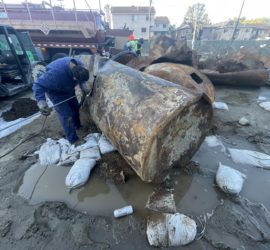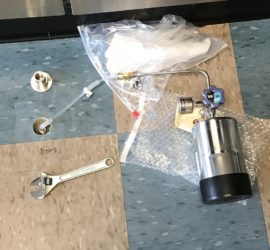Soil Contamination Testing for Limited Environmental Assessment Services
Soil contamination testing is the process of screening the subsurface for signs of recent environmental impact. To illustrate, geologists work with special drilling technicians to collect discrete samples of soil, groundwater, and soil gas. Afterward, these samples undergo laboratory testing for various industrial chemical compounds. Lastly, a professional geologist evaluates the data and findings, to prepare a scientific report with conclusions and recommendations. This type of work falls under the “Environmental Site Assessment” category of services and generally follows EPA standards and guidelines. Updated November 5, 2023.
Soil Contamination Test
When soil contamination testing is required by financial entities or real estate groups for liability protection, a comprehensive investigation occurs in the form of a Phase II Environmental Site Assessment. When independent parties seek to determine whether their property has contamination, a variety of limited environmental site assessment options are available. For instance, a shallow soil-gas subsurface investigation. For more information about soil contamination testing and other environmental testing options, call (888) 930-6604 to speak with an environmental professional geologist.
Subsurface Investigations
The objective of a limited subsurface investigation is to perform soil contamination testing and determine whether impacts exist in the subsurface. This commonly includes shallow soil and groundwater underlying a property. Additionally, shallow soil gas underlying a property or building foundation can be screened for contaminants in vapor form. Additionally, a geophysical survey can also identify the precise location of any underground storage tanks (USTs) or other subsurface features. For instance, clarifiers, utility lines, pipelines, and more.
Limited Soil Contamination Testing
Each subsurface investigation must be custom in scope, on the basis of site-specific characteristics. The general scope of work varies from site to site and depends on local geology, chemicals of concern, job site history, and areas of concern. Geo Forward prepares custom scopes of work for limited subsurface investigations, with an emphasis on quality and client inquiries. All soil contamination testing projects are under the supervision of a professional geologist and engineer. And work must be in accordance with the latest EPA methodologies for sampling, testing, and reporting.
When a Full-Scope Phase 2 ESA is Necessary
Soil contamination testing can be part of a variety of assessment procedures. Commercial or industrial properties will generally require a Phase 1 Environmental Site Assessment during a transaction. Based on the results of the Phase 1 ESA process, there may or may not be a need to sample the subsurface materials, using the guidelines and procedures of the American Society for Testing and Materials (ASTM). If so, the next step is a Phase II Environmental Site Assessment, which uses the conclusions and recommendations of the recent Phase I Environmental Report to justify a scope. Generally, high-risk industrial properties will require a Phase II Subsurface Investigation. And the results may indicate some detections of contamination in the subsurface. However, the conclusions and recommendations will be on the basis of whether those contamination levels supersede the screening level numbers or not.



